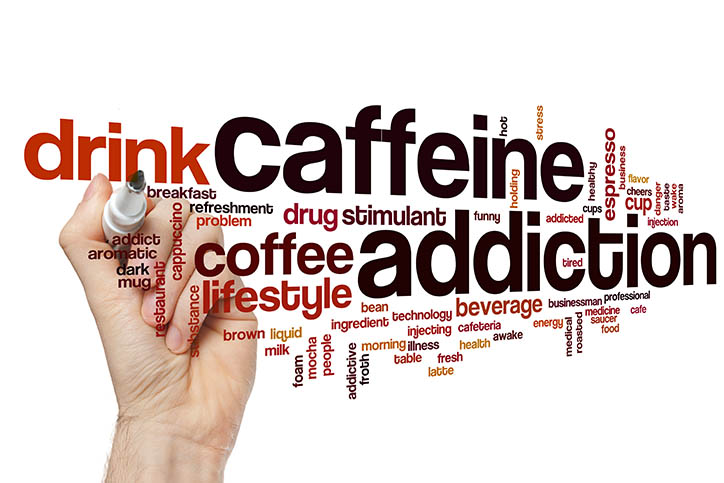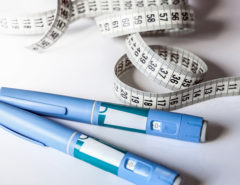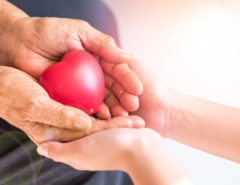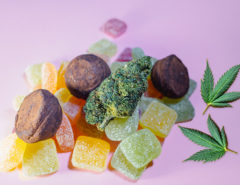What’s your poison? Coffee or tea? Coke or Pepsi? Monster or Red Bull? Chocolate? No matter which one you pick, each contains caffeine. The U.S. Food and Drug Administration (FDA) estimates that 80% of adults in the U.S. consume some form of caffeine every day. Read on to learn more about what caffeine is and what it does to your body.
What is Caffeine?
Caffeine is a stimulant drug. It is often used to help people feel more awake, aid in pain relief, or as a diuretic (water pill). Caffeine can be consumed in a drink, taken in a medicine, or ingested as a dietary supplement. Did you know that some over-the-counter (OTC) medicines, such as Excedrin® Migraine, Goody’s® Extra Strength, and Midol® Complete contain caffeine? Let’s take a look at how much caffeine is found in some products:
- 12 oz. can of soda contains 30-40 mg.
- 8 oz. of green or black tea contains 30-50 mg.
- 8 oz. of coffee contains 80-100 mg.
- 8 oz. of decaf coffee contains 2-15 mg.
- 8 oz. of energy drinks contains 40-250 mg.
- 1 caplet/tablet of Excedrin® Migraine contains 65 mg.
- 1 powder stick of Goody’s® Extra Strength Headache Powder contains 32.5 mg.
- 1 caplet of Midol® Complete contains 60 mg.
- 1 caplet of NoDoz alertness aid contains 200 mg.
The FDA recommends healthy adults consume no more than 400 mg. of caffeine per day.
How Does Caffeine Affect Your Body?
People react differently to caffeine based on factors such as body weight, other medicines taken, tolerance, and metabolism. Within 15-45 minutes of consuming a serving of caffeine, you may feel:
- Enhanced mood (excited, happy, etc.)
- Less tired
- More energy
- Increased alertness
- Increased urination
In larger amounts, caffeine can cause:
- Jitters (arms and/or legs shaking)
- Anxiousness
- Nausea
- Trouble sleeping
- Headache
- Dizziness
- Increased heart rate
Overdosing on caffeine is dangerous. Effects include:
- Confusion
- Hallucinations
- Vomiting
- Seizures
It takes about 4-6 hours for your body to metabolize half of the caffeine you consume. If you’re planning to go to bed at 9 p.m., you may want to avoid consuming caffeine after 3-5 p.m. to get a decent night’s rest.
People who frequently consume caffeine can go through withdrawal when they don’t have their daily beverage or supplement. Symptoms of withdrawal can include irritability, headache, anxiety, and nervousness. If you’re planning to stop consuming caffeine, it’s recommended that you slowly cut back over time, instead of stopping cold turkey. This will decrease the possibility of going through an unpleasant withdrawal.
How Does Caffeine Affect Children and Teens?
Caffeine is not recommended for children under 12 years old. Yet, the Centers for Disease Control and Prevention (CDC) found that 73% of children ages 2-22 consume caffeine on any given day. Since caffeine stimulates the central nervous system, it can raise children’s blood pressure and affect their sleep.
According to the American Academy of Pediatrics, teens are drinking more energy drinks and coffee than soda. Children over age 12 should consume no more than 85-100 mg. of caffeine per day, which is equivalent to one 8 oz. cup of coffee. They should not have energy drinks, because some energy drinks can contain 250 mg. in one serving, putting them over the maximum daily recommendation. It should also be noted that some energy drinks contain more than one serving in a can.
Because caffeinated beverages are widely available, teens often have easy access to them. They may unknowingly overdose on caffeine after consuming multiple caffeine-containing beverages. “Stacking” is the term that teens use to describe taking multiple products together to get a stronger caffeine effect.
Additional Important Information
- Mixing caffeine with alcohol can mask the effects of alcohol. Caffeine is a stimulant and alcohol is a depressant, so the caffeine can keep drinkers more alert, potentially allowing them to drink more. The signs of impairment from drinking can also be unseen or unfelt, leading to possible injury.
- While pure and highly concentrated caffeine powder has been removed from the market, it is important to read the label of any caffeine product you use. Reading the label will inform you about how much caffeine is in the product, what the serving is, and directions on how to use it. Always use the scoop that comes with the product to ensure you get the directed amount.
If you or someone you know is experiencing unwanted or unexpected effects from caffeine, call the poison experts right away. We are ready to take your call 24/7/365 at 1-800-222-1222.





Leave a Reply